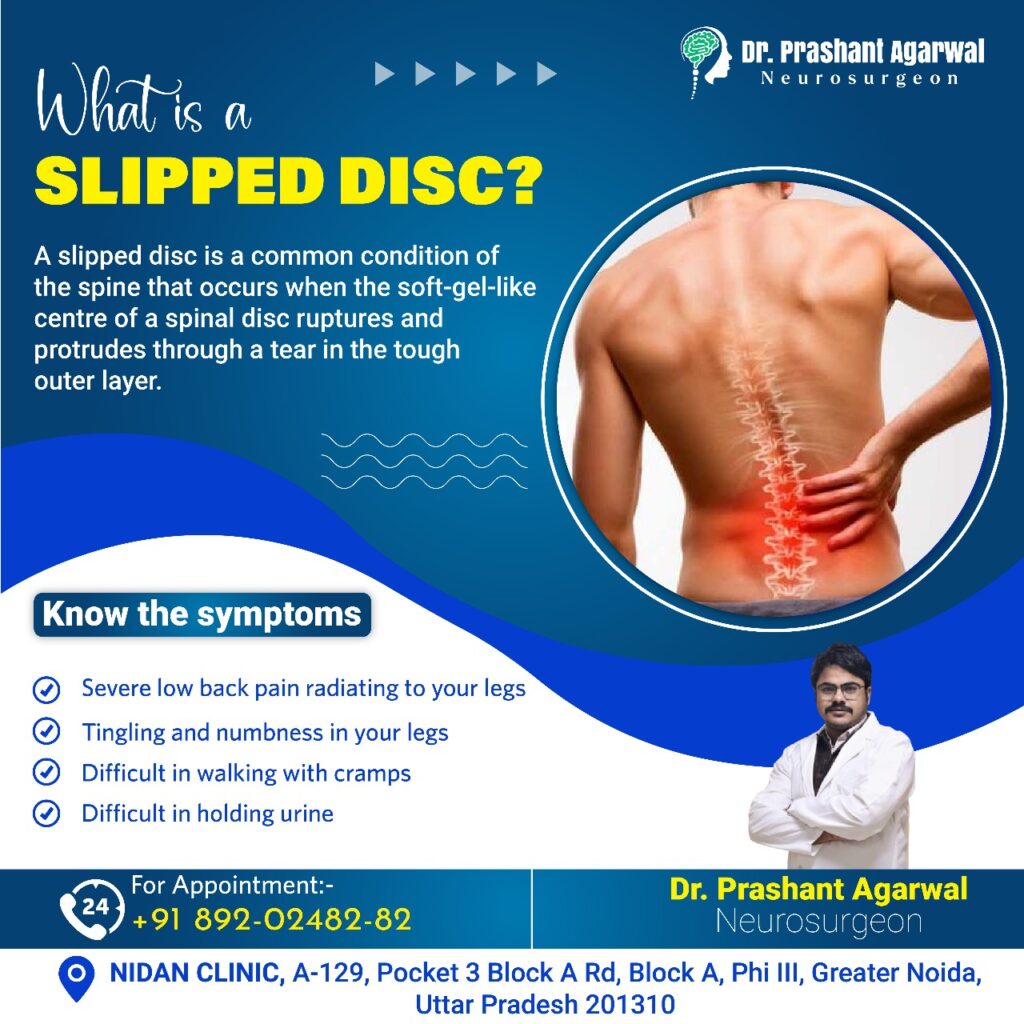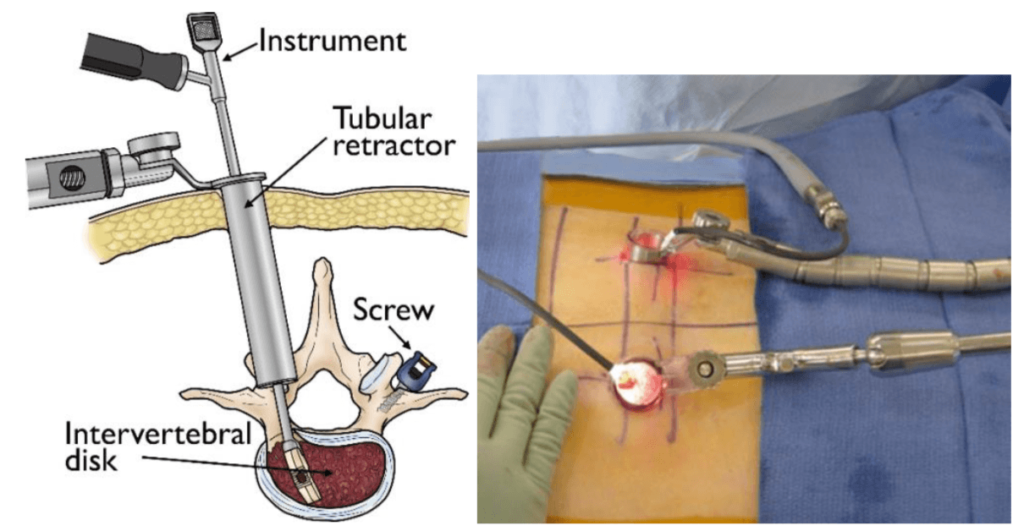


A slipped disc is a painful condition that occurs in the spine in which cushion-like tissue (the inner portion of the disc) bulges out because of weakness in the outer portion of the disc. It is also known as a herniated, ruptured, or bulging disc and can occur in any part of the spine, most commonly in the lower back.
Slipped discs can occur for various reasons, such as ageing, excessive exercise, lifting heavy objects, and being overweight. However, it can also happen from any trauma or injury.
Symptoms may vary among individuals according to the location of the disc. Some of the common signs of a slipped disc are discussed below.

Surgery for a slipped disc is recommended when other treatments, such as medication and physiotherapies, do not resolve or provide relief from the pain. Slipped disc surgery is done to remove the disc tissue to lessen the pressure on the irritated nerves. It is also preferred as a treatment option for slipped discs as it can offer long-term relief from its symptoms. However, it is recommended that you consult your spine surgeon before going for any surgical procedure and discuss your pros and cons with them.
Various types of surgical options are used to treat problems related to slipped discs. Other than traditional and open surgery for herniated discs, the minimally invasive surgical option is the most preferred nowadays. This is because minimally invasive procedures offer several benefits, such as fewer incisions, shorter hospital stays, and faster recovery.
Minimally invasive spine surgery is performed by the doctor making a small incision through your skin. Following this, an endoscope is inserted through the incision, which gives the doctor a better and magnified view of the operative organ.
Some of the benefits of minimal spine surgery are
Endoscopic spine surgery (ESS) is an effective surgical process that uses the latest techniques to treat various spine problems. It is a minimally invasive surgical procedure that includes the use of the endoscope, a thin medical instrument with a thin tunnel with a small lens at the end.
In endoscopic spine surgery, neurosurgeons insert the endoscope through a small incision to view the internal organs. Through the endoscope, your doctor will pass the medical instrument to the targeted area of the spine.

People usually prefer endoscopic spine surgery over traditional surgeries as it offers minimum muscle trauma, low blood loss, and less tissue dissection.
This procedure is typically performed under regional anaesthesia.
A microdiscectomy is a surgical procedure to treat a herniated or slipped disc. This surgery, also known as microdecompression, focuses on the removal of the material that is causing the pain and relieves the pressure on the spinal nerve.

During a microdiscectomy, a small part of the disc material that is pressing the nerve is taken out. Patients undergoing this medical process can resume their normal activities fairly quickly. This surgery is done by using a magnification device like a microscope and uses smaller incisions as compared to open discectomy surgery.
MIS TLIF is a minimally invasive transforaminal lumbar interbody fusion. It is the latest technique that makes lumbar fusions less invasive as compared to traditional surgery. During this surgery, neurosurgeons insert a small tube through the skin. Through this tube, a microscope is positioned to view the disc and the surrounding nerves.

Benefits of this procedure include smaller incisions, less blood loss, and less damage to the surrounding tissue. It also allows patients to recover faster in comparison to traditional TLIF surgery.
Unilateral Biportal Endoscopic (UBE) is a type of endoscope-assisted spinal surgery. During this procedure, two ports are used: one for an endoscope and the other for surgical tools. The surgery is performed under anaesthesia and involves small incisions for the endoscope and instruments. UBE offers advantages like enhanced safety, efficiency, minimal muscle and tissue damage, and earlier patient mobility.

CONCLUSION
A slipped disc is a painful condition that can lead to disturbances in an individual’s daily activities. There are treatments available to manage slipped discs, such as medications, physiotherapy, and surgery.
When medications and therapies are not providing enough relief to the patient from the pain, surgery is considered the best option to help relieve long-term pain and discomfort.
In this blog, we discussed some of the minimally invasive surgical options like endoscopy, microdiscectomy, and MIS Transforaminal Lumbar Interbody Fusion that provide various advantages like less incision, shorter hospital stay, and less damage to the surrounding tissues and nerves.
It is important to consult your neurosurgeon before undergoing any of the surgical options. You can also discuss the benefits and risks associated with the surgical procedure.